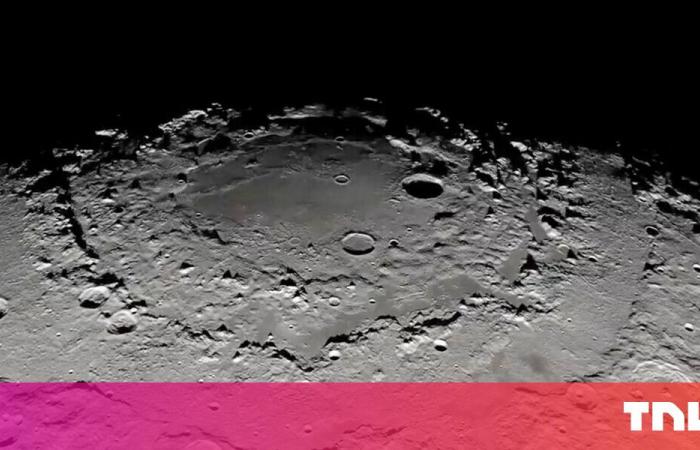Without a strong magnetic field, a planet struggles to hold onto a breathable atmosphere – which is bad news for life as we know it. A new study published in Science Advances suggests that the moon’s now-extinct magnetic field may have helped protect our planet’s atmosphere when life was forming about 4 billion years ago.
Today the earth has a strong global magnetic field that protects the atmosphere and low-orbit satellites from strong solar radiation. In contrast, the moon has neither a breathable atmosphere nor a global magnetic field.
Global magnetic fields are created by the movement of molten iron in the cores of planets and moons. To keep the liquid moving, energy is required, e.g. B. Heat trapped in the core. If there is not enough energy, the field dies.
Without a global magnetic field, the charged particles of the solar wind (solar radiation) that pass near a planet generate electric fields that can accelerate charged atoms, so-called ions, from the atmosphere. This process is taking place on Mars today, and it is losing oxygen – something that was measured directly from the Martian atmosphere and the mission of volatile evolution (Maven). The solar wind can also collide with the atmosphere and push molecules into space.
The Maven team estimates that the amount of oxygen lost from the Martian atmosphere throughout history is equivalent to the amount contained in a 23-meter-thick layer of global water.
[Read: The Moon’s surface is rusting — and Earth may be to blame]
Researching ancient magnetic fields
The new research examines how the early fields of the earth and moon might have interacted. But exploring these ancient fields is not easy. Scientists rely on ancient rocks that contain small grains that were magnetized when the rocks were formed, which maintained the direction and strength of the magnetic field at that time and location. Such rocks are rare and extracting their magnetic signal requires careful and meticulous laboratory measurement.
However, such studies have shown that the Earth has generated a magnetic field for at least the last 3.5 billion years and possibly as early as 4.2 billion years, with an average strength of just over half what it is today. We don’t know much about how the field used to behave.
In contrast, the lunar field was perhaps even stronger than that of the Earth about 4 billion years ago before it dropped steeply into a weak field state 3.2 billion years ago. At present, however, little is known about the structure or temporal variability of these ancient fields.
Another complexity is the interaction between the early lunar and geomagnetic fields. The new paper, which modeled the interaction of two magnetic fields with either aligned or opposite north poles, shows that the interaction expands the area of near-Earth space between our planet and the sun that is protected from the solar wind.
The new study is an interesting first step in understanding the importance of such effects, on average over a lunar orbit or over hundreds of millions of years, that are important in assessing the habitability of planets. But to be sure, we need more modeling and measurements of the strengths of the Earth and Moon’s early magnetic fields.
In addition, a strong magnetic field does not guarantee the continued habitability of a planet’s atmosphere – its surface and deep internal environment are just as important as influences from space. For example, the sun’s brightness and activity has evolved over billions of years, as has the solar wind’s ability to strip atmospheres.
How each of these factors contribute to the development of the habitability of the planet, and therefore life, is not yet fully understood. Their nature and interaction are also likely to change over geological time. Fortunately, the latest study has added another piece to an already intriguing puzzle.
This article was republished from The Conversation by Christopher Davies, Associate Professor of Theoretical Geophysics at the University of Leeds, and Jon Mound, Associate Professor of Geophysics at the University of Leeds, under a Creative Commons license. Read the original article.
These were the details of the news Why the moon’s early magnetic field could be responsible for life... for this day. We hope that we have succeeded by giving you the full details and information. To follow all our news, you can subscribe to the alerts system or to one of our different systems to provide you with all that is new.
It is also worth noting that the original news has been published and is available at de24.news and the editorial team at AlKhaleej Today has confirmed it and it has been modified, and it may have been completely transferred or quoted from it and you can read and follow this news from its main source.

